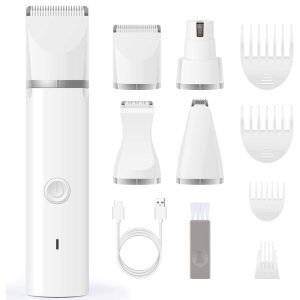How to Care for a Newborn Puppy

Puppy: Within the first 30 days of life, mother’s milk is the optimal source of nutrition.However, in real-life situations, mothers often produce insufficient milk, or caregivers may have limited energy when raising multiple puppies, making it difficult to ensure each one gets enough milk. In such cases, artificial feeding becomes necessary.
When selecting milk, pay special attention to purchasing pet-specific formula or using infant formula as a substitute. Never feed dogs regular cow’s milk, as puppies’ digestive systems cannot process its components, often leading to diarrhea and other issues. For specific feeding and care methods, refer to the guidelines below:
1. Before 20 Days Old
Puppies under 20 days old have underdeveloped digestive systems and require frequent feedings, approximately every 2 hours. After each feeding, assist with elimination: Dip a piece of cotton wool in warm water, squeeze out excess liquid, then gently rub or press the puppy’s bottom until they urinate and defecate completely. After cleaning, apply a thin layer of erythromycin ointment around the anal area to prevent skin irritation and inflammation.
Use a pet bottle for feeding, moving slowly and pushing the nipple gently to prevent milk from flowing too rapidly. Feeding too quickly can cause milk to enter the trachea, which can be life-threatening. Be patient during feeding—continue as long as the puppy shows interest. Stop when you see their belly slightly rounded, indicating they are full.
2. From 20 days old to 40-50 days old
Once puppies reach 20 days old, feeding frequency can be reduced to every 4 hours. By 40 to 50 days old, feeding four times daily is sufficient.
3. Around 50 days old
Around 50 days old, puppies can be fully weaned off their mother’s milk. This stage is known as the weaning period. Transitioning them from milk to solid food must be done gradually, not all at once, to prevent digestive upset. You can prepare homemade weaning food tailored to your puppies’ acceptance levels to help them transition smoothly.
How to Make Weaning Food
(1) Take an appropriate amount of puppy kibble and soak it in warm water until completely softened with no hard centers remaining.
(2) Mash the softened kibble with a spoon, then add a small amount of powdered puppy milk replacer or infant rice cereal. This provides calcium and mimics the texture of mother’s milk, making it more palatable for puppies.
(3) Mix these ingredients together and gently stir into a paste. This makes a suitable weaning food for puppies.
4. Starting at 3 Months Old
From 3 months old, puppies enter their growth phase. The food they start eating after weaning will influence their future eating habits, so food choices during this stage are crucial.
By 2 months old, puppies have mostly grown their full set of baby teeth, making it time to gradually transition them to puppy food. Initially, don’t switch to pure puppy food immediately. Instead, mix a small amount of puppy food into their previous weaning formula, feeding 3 to 4 times daily. Gradually increase the puppy food portion while reducing the weaning formula each day until the transition is complete. Feeding frequency can also be adjusted accordingly. By the time the puppy reaches 6 months old, transition to feeding 2 to 3 times daily.
5.2-5 Months Old
The period from 2 to 5 months of age is a critical window for establishing healthy eating habits. It’s essential to seize this opportunity. If you frequently feed them human food or canned food during this time, they may perceive dry kibble as bland and develop a reluctance to eat it later on.
If you plan to keep dry kibble as the primary diet, avoid feeding human food or mixing canned food with kibble during this period. Note that puppy food contains higher calories and richer nutrients than adult dog food. Its smaller kibble size also makes it easier for puppies to chew, making it ideal for growing dogs.
6. Growth Spurt Period (5-6 Months)
Dogs aged 5 to 6 months enter a growth spurt phase, experiencing rapid development. By this stage, they typically reach half their adult weight. However, growth rates vary by breed: larger dogs take longer to reach full size and grow at a slower pace compared to smaller breeds.
Adjusting Meal Frequency During the Growth Spurt
Regarding meal frequency, puppies typically receive four meals daily after weaning. By 5-6 months, if the puppy has reached half its adult weight, transition to two to three meals per day. Maintain this schedule until adulthood, then gradually reduce to one to two meals daily.
admin
-
Sale!

Washable Pet Cooling Pad for Cats and Dogs
$10.99Original price was: $10.99.$9.99Current price is: $9.99. This product has multiple variants. The options may be chosen on the product page -
Sale!

Washable Cat Window Hammock Cooling Bed
$23.99Original price was: $23.99.$22.99Current price is: $22.99. -
Sale!

Tropical Amphibian Rainforest Tank, Lizard Cage
$38.99Original price was: $38.99.$36.99Current price is: $36.99. -
Sale!

Silent 4-in-1 Waterproof Charging Dog Hair Trimmer
$49.88Original price was: $49.88.$47.99Current price is: $47.99.